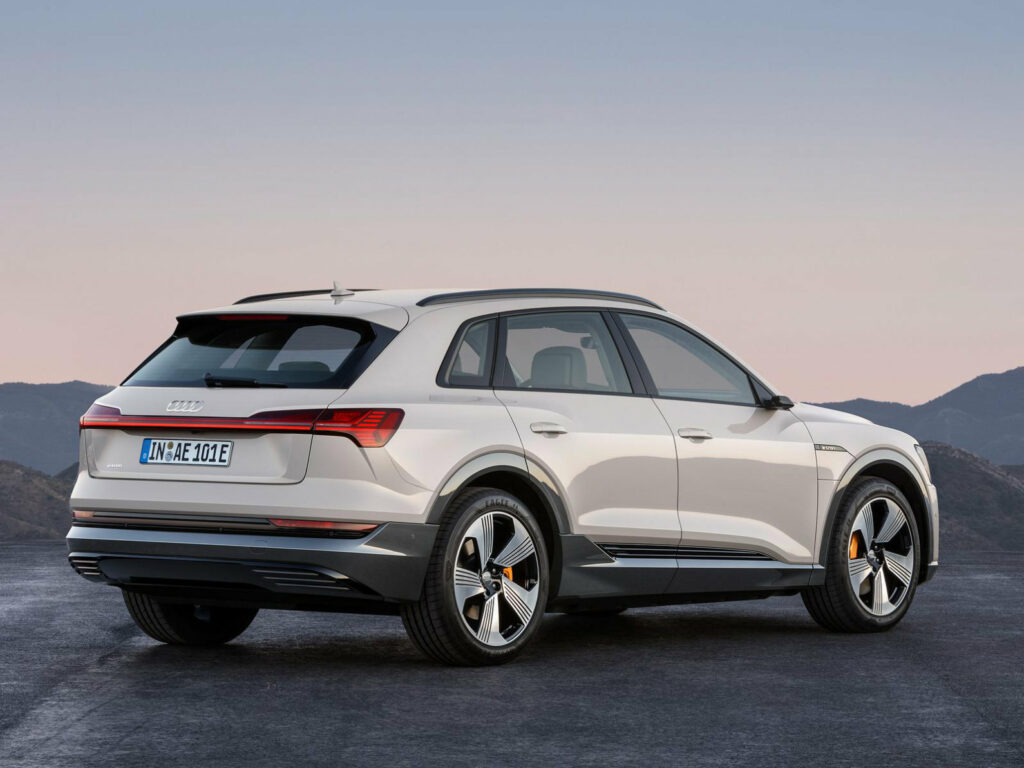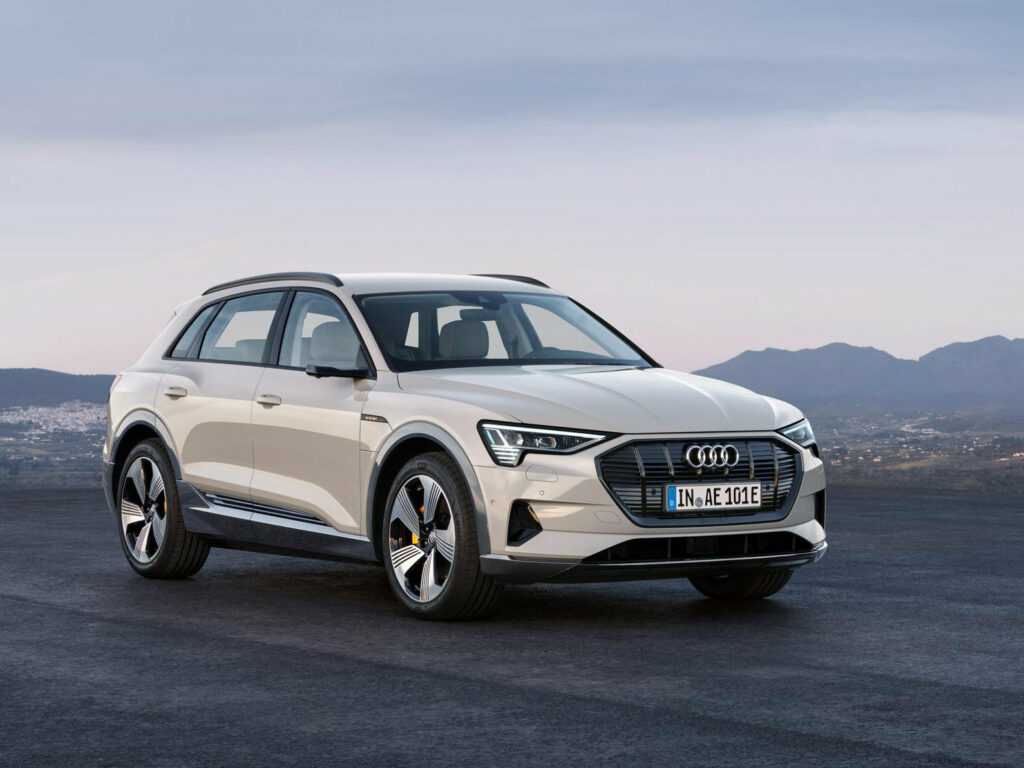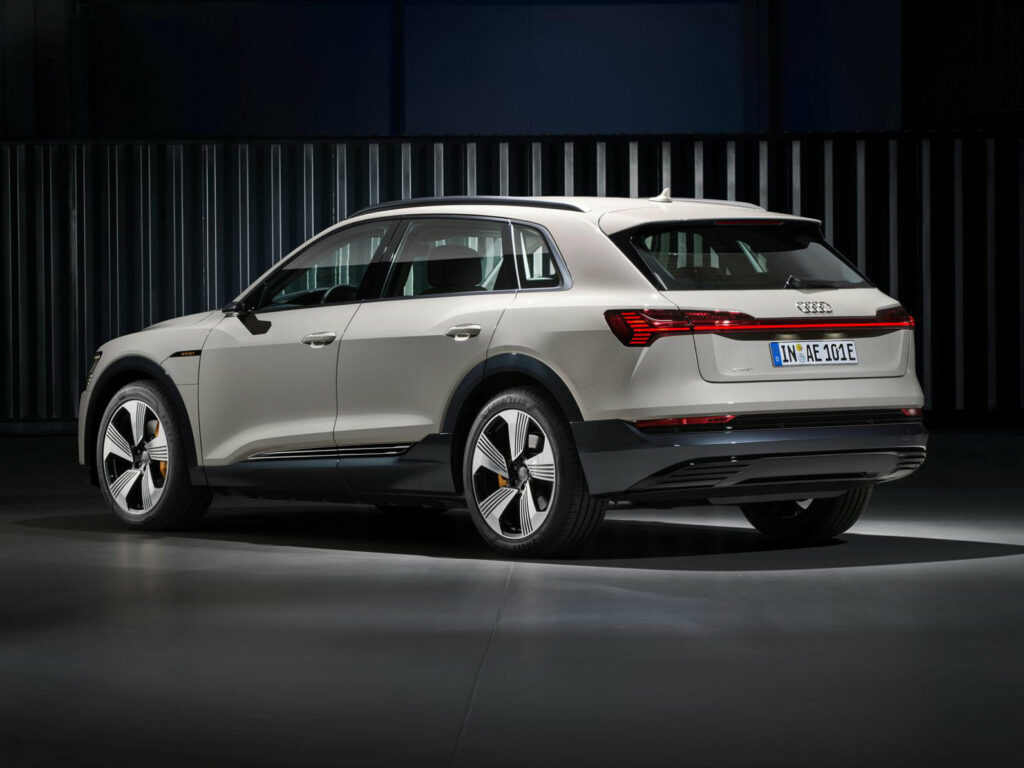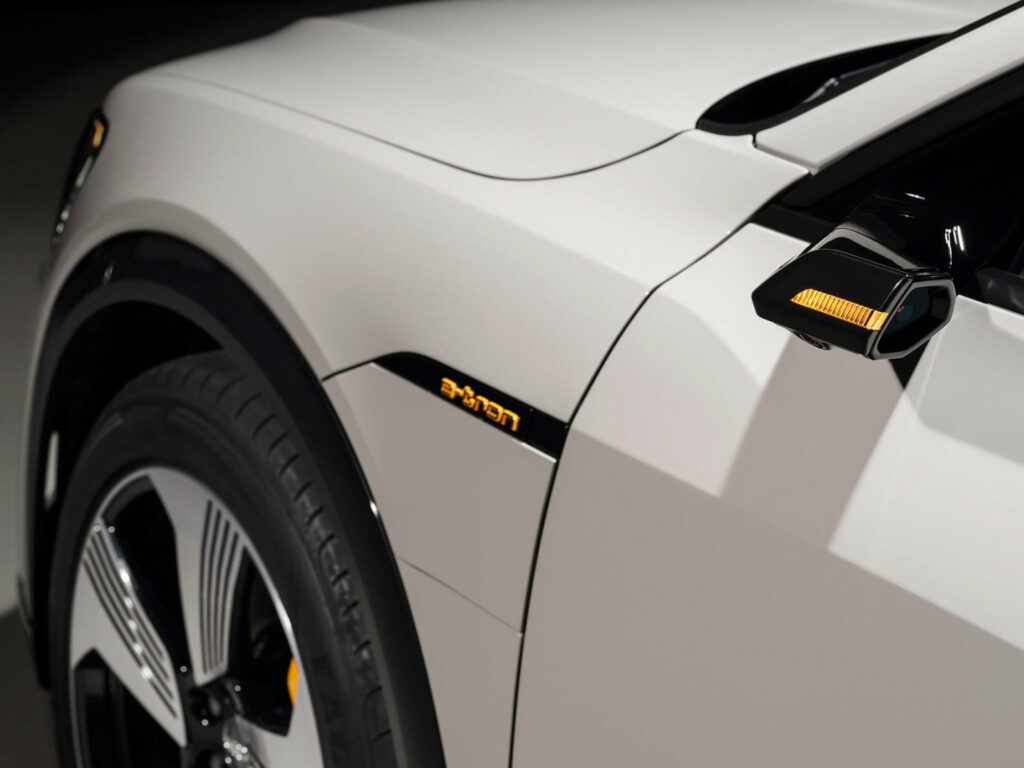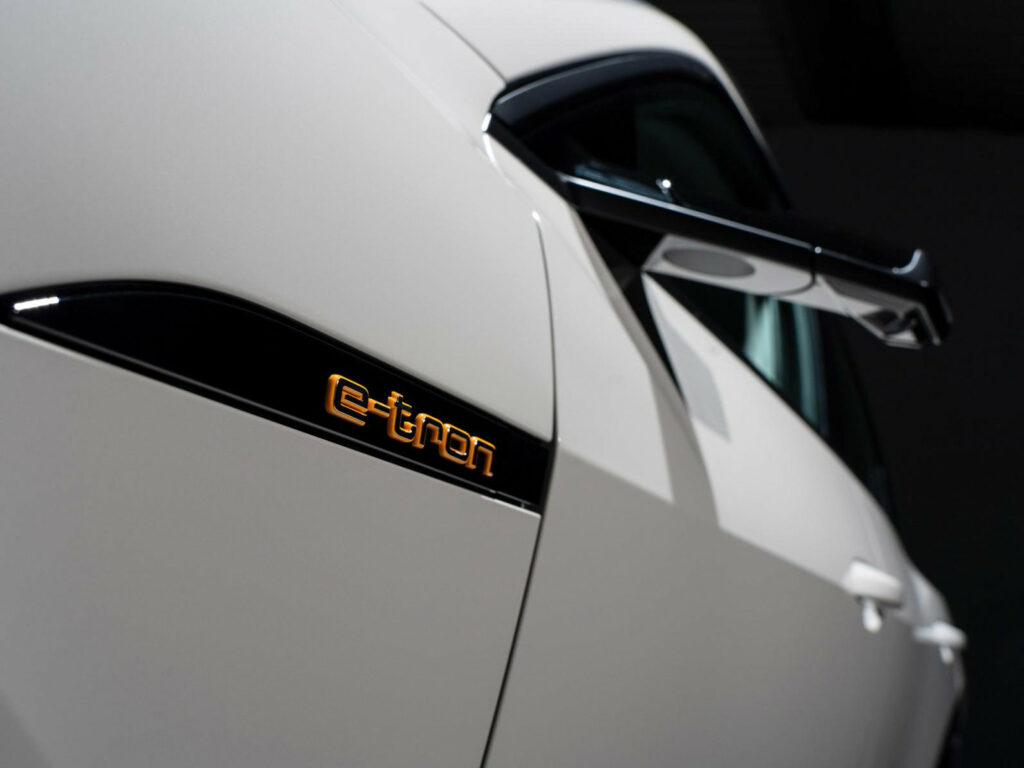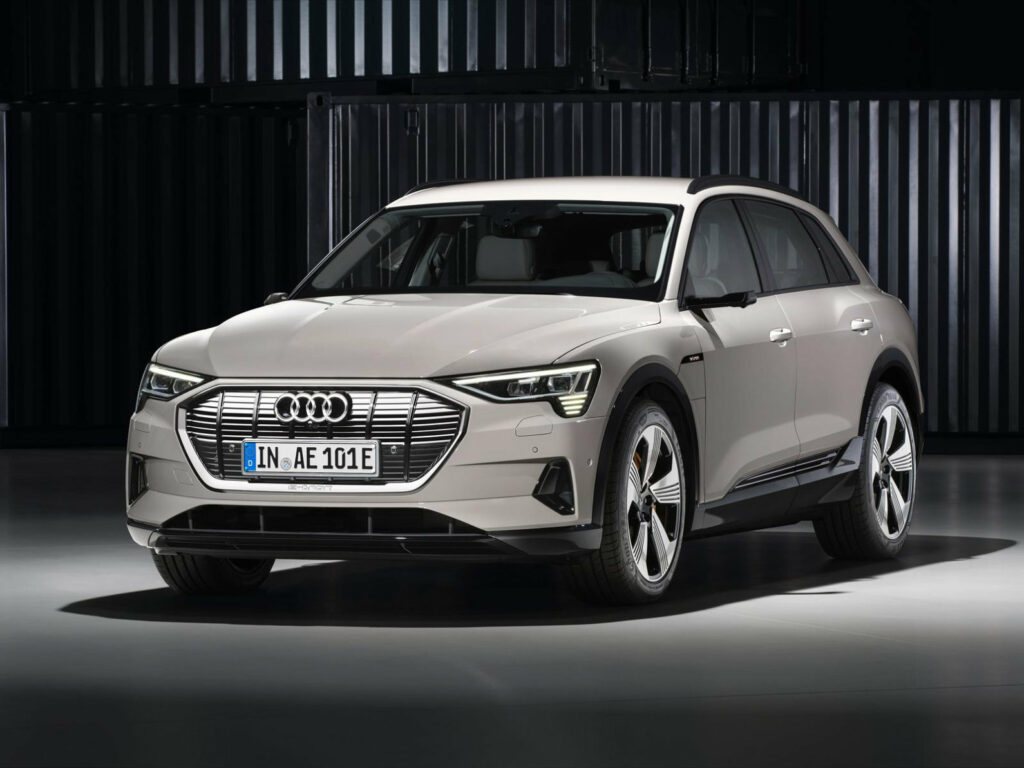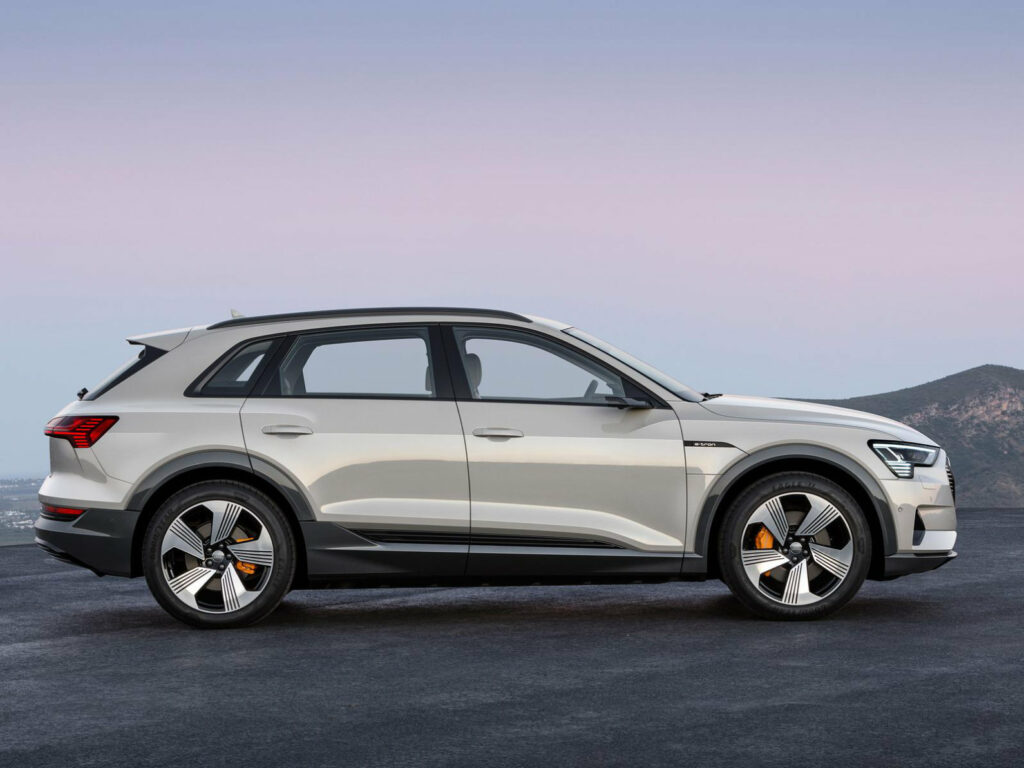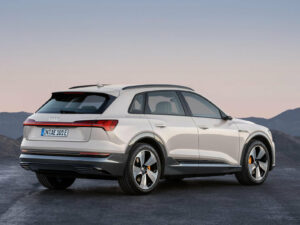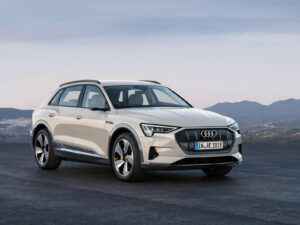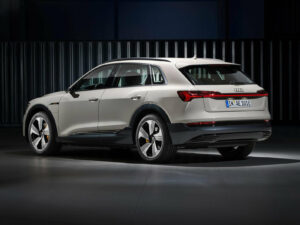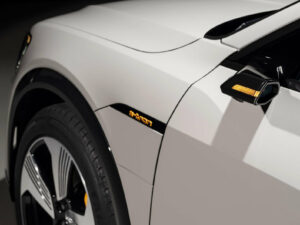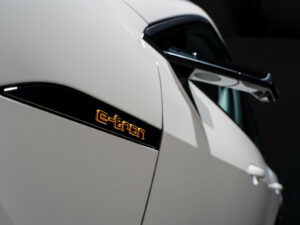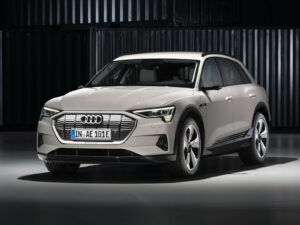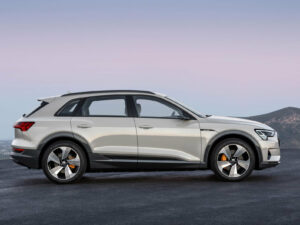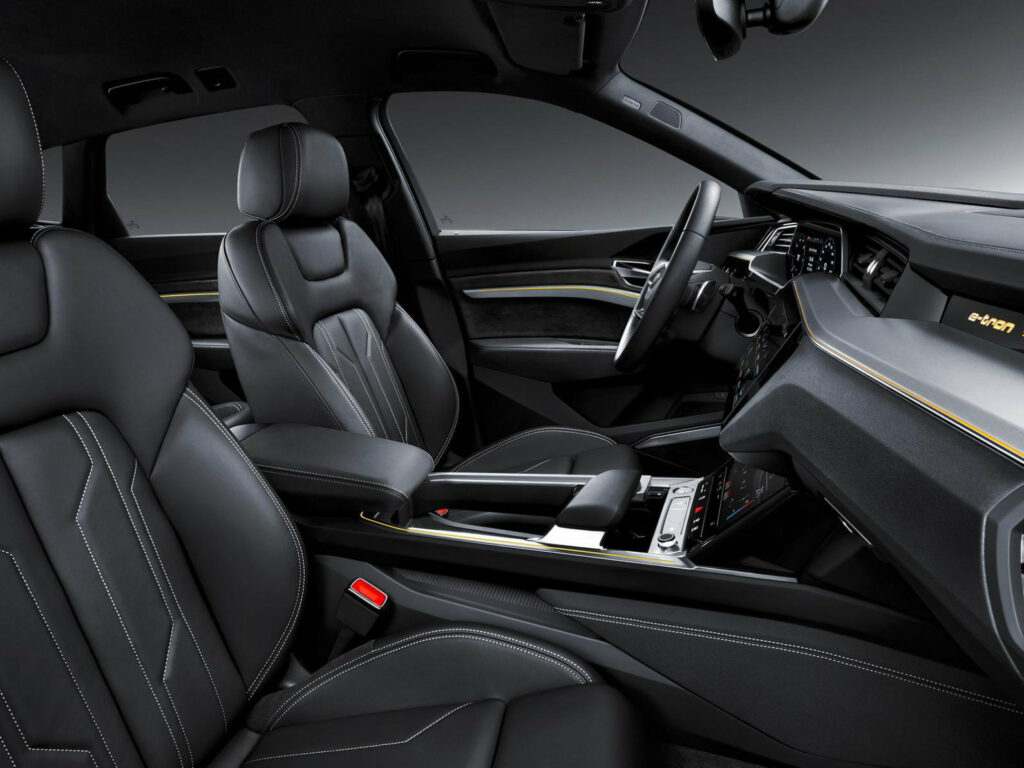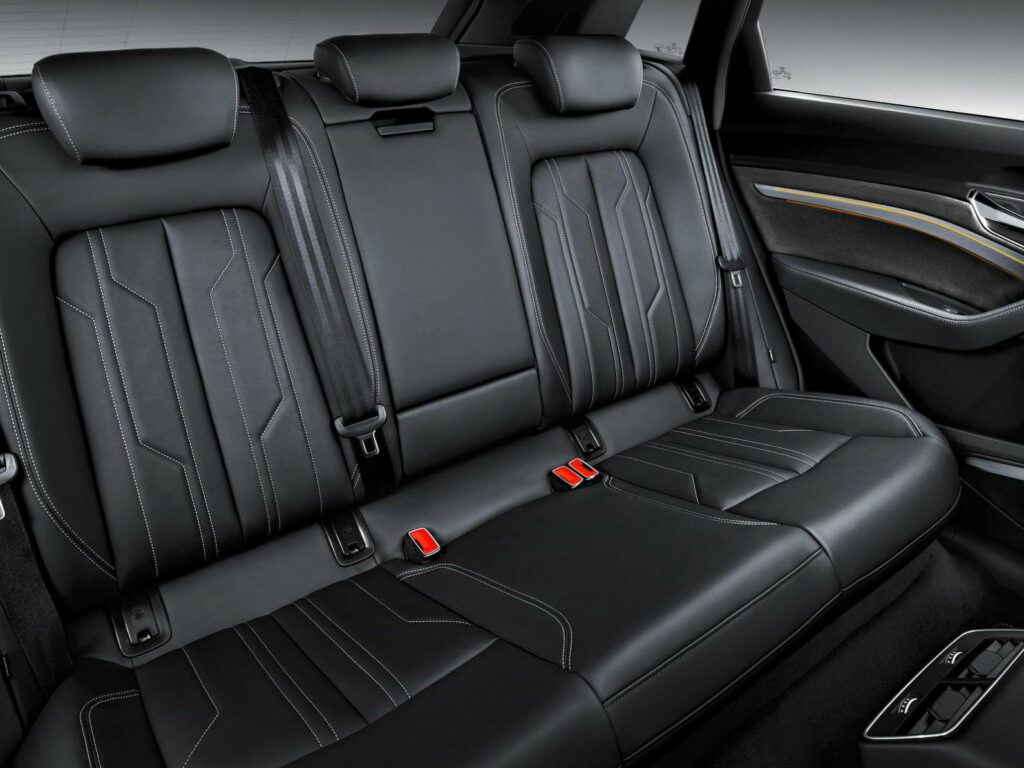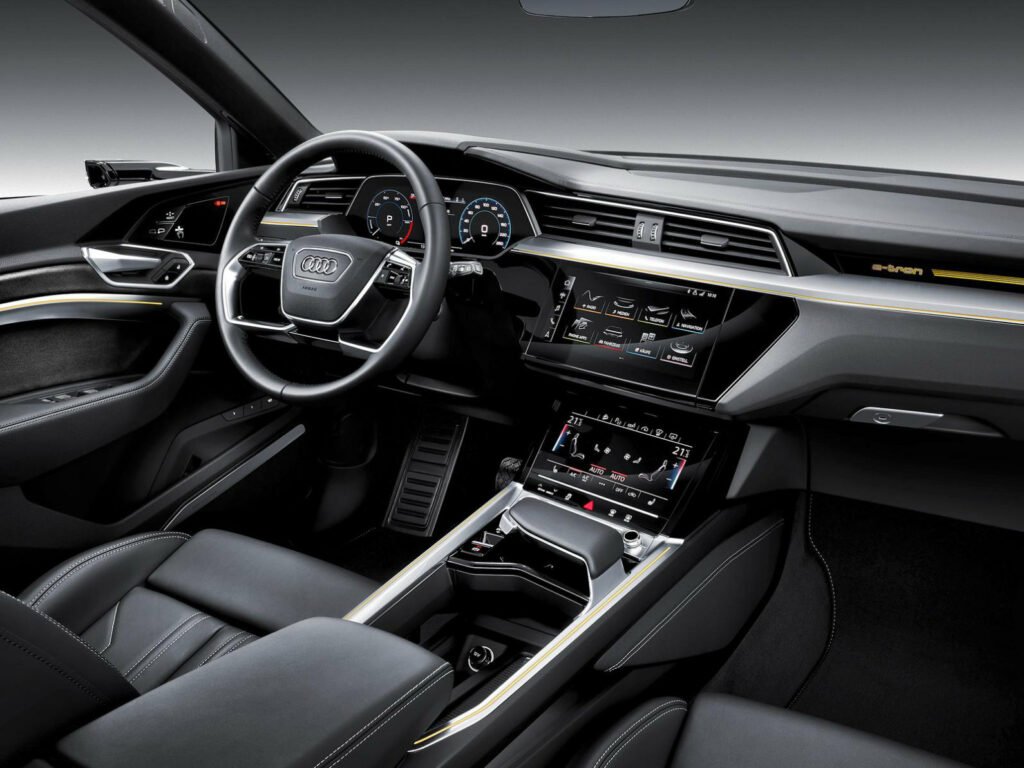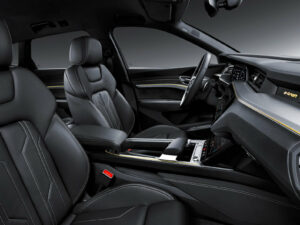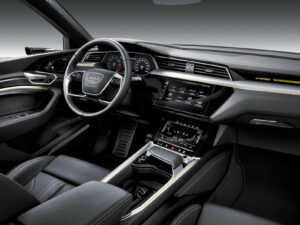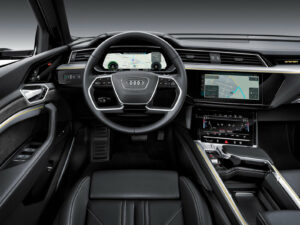Audi e-tron Sportback 55 quattro
Concept and small-scale electric cars with three or more electric motors have been around for a long time, but mass “electric cars” have had no more than two engines so far. The first large-scale three-engine electric car is the Audi e-tron S, that is, the “hot” version of the usual e-tron. “The Esca is presented with two body types at once, the regular e-tron S and the coupe-like e-tron S Sportback.
There is one electric motor on the front axle – the same one that the Audi e-tron 55 version has at the back. Two electric motors are mounted on the rear axle. They are almost the same as in the front version of the Audi e-tron 55, but in an adapted form: each motor rotates its own wheel and has an individual control unit. That is, the traction on the left and right wheels of the rear axle can be adjusted independently – a perfect torque vectoring! Each motor has its own single-speed gearbox.
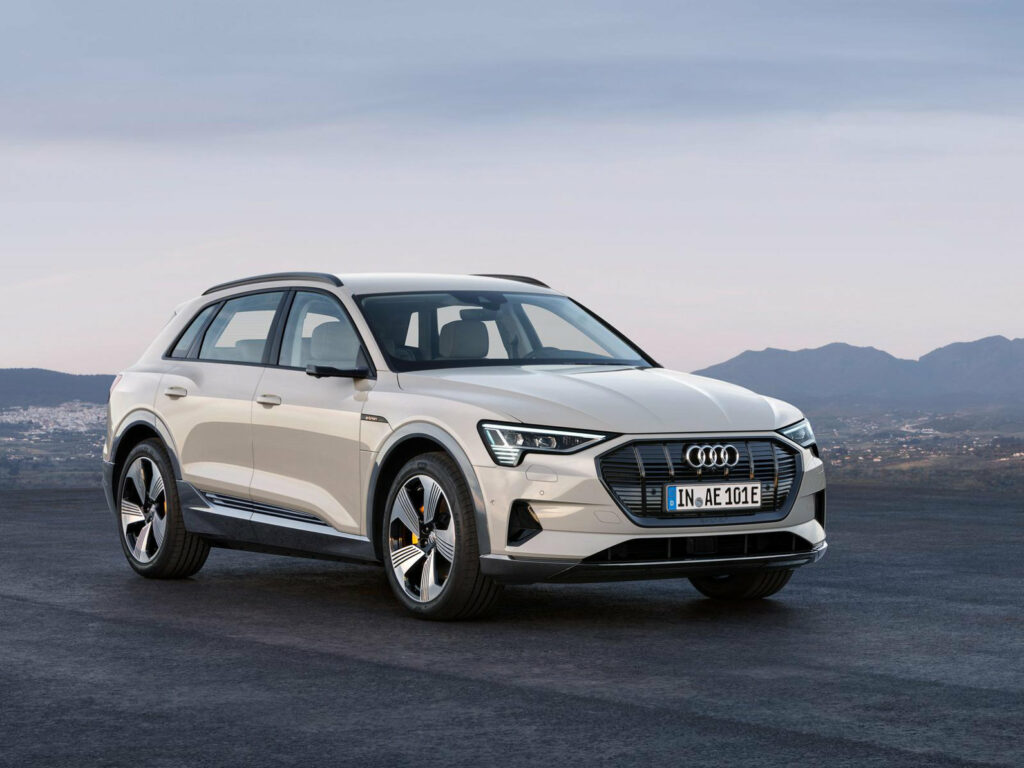
The peak output of the three engines is 503 hp and 973 Nm, but such figures are only available for eight seconds. Nominal output is lower (the company does not list it), and the default Audi e-tron S does not move in the rear-wheel drive: the front motor is connected only if necessary. Acceleration time to 100 km/h is 4,5 s against 5,7 s of two-motor version e-tron 55 (408 hp). But the top speed is still not so high for the such a car – 210 km/h. However, the main feature of the “esk” should be not the ultimate dynamics, but controllability.
The traction battery is the same as in the 55 version – with a capacity of 95 kW∙h, of which only 86 kW∙h is effectively used. The mileage on a single charge is not so great: 359 km on the WLTP cycle in the “full” crossover and 364 km in a more streamlined Sportback. Visually, the S-version of electric cars can be identified only by wheel arches widened by 23 mm, new nameplates, and a slightly different decoration. Inside the cabin, the only differences are typical trim and seats with increased lateral support.
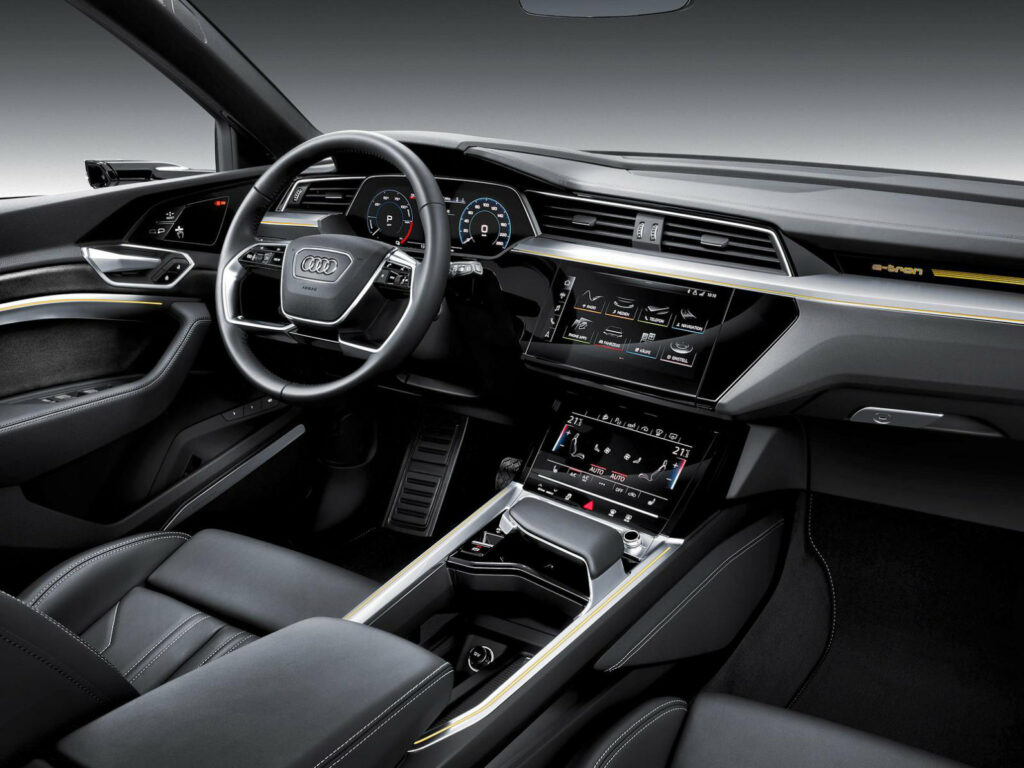
In addition, e-tron S has tuned air suspension (ground clearance varies in the range of 76 mm) and more powerful front brakes with six-piston mechanisms. And in the front air intakes, which are necessary for cooling brakes, there are electronically controlled flaps: the system opens them only if necessary. According to the idea, closed flaps improve aerodynamics.
| Performance | |
| Acceleration 0 – 100 km/h | 5.7 sec |
| Top Speed | 200 km/h |
| Electric Range | 375 km |
| Total Power | 300 kW (408 PS) |
| Total Torque | 664 Nm |
| Drive | AWD |
| Battery and Charging | |
| Battery Capacity | 95.0 kWh |
| Battery Useable | 86.5 kWh |
| Europe | |
| Charge Port | Type 2 |
| Port Location | Left Side – Front |
| Port Location 2 | Right Side – Front |
| Charge Power | 11 kW AC |
| Charge Time (0->375 km) | 9h15m |
| Charge Speed | 41 km/h |
| Fastcharge Port | CCS |
| FC Port Location | Left Side – Front |
| FC Port Location 2 | – |
| Fastcharge Power (max) | 155 kW DC |
| Fastcharge Time (38->300 km) | 26 min |
| Fastcharge Speed | 600 km/h |
| Energy Consumption EVDB Real Range | |
| Range | 375 km |
| Vehicle Consumption | 231 Wh/km |
| CO2 Emissions | 0 g/km |
| Vehicle Fuel Equivalent | 2.6 l/100km |
| WLTP Ratings (TEL) | |
| Range | 452 km |
| Rated Consumption | 216 Wh/km |
| Vehicle Consumption | 191 Wh/km |
| CO2 Emissions | 0 g/km |
| Rated Fuel Equivalent | 2.4 l/100km |
| Vehicle Fuel Equivalent | 2.2 l/100km |
| WLTP Ratings (TEH) | |
| Range | 373 km |
| Rated Consumption | 259 Wh/km |
| Vehicle Consumption | 232 Wh/km |
| CO2 Emissions | 0 g/km |
| Rated Fuel Equivalent | 2.9 l/100km |
| Vehicle Fuel Equivalent | 2.6 l/100km |
| Real Energy Consumptionbetween 163 – 315 Wh/km | |
| City – Cold Weather | 231 Wh/km |
| Highway – Cold Weather | 315 Wh/km |
| Combined – Cold Weather | 270 Wh/km |
| City – Mild Weather | 163 Wh/km |
| Highway – Mild Weather | 251 Wh/km |
| Combined – Mild Weather | 204 Wh/km |
|
Energy use for each trip will vary considerably depending on the driver and the conditions. Therefore, we have provided a range of estimates which can be useful in developing an understanding of the potential benefits of this technology. |
|
| Safety Rating | |
| Adult Occupant | 91% |
| Child Occupant | 85% |
| Rating Year | 2019 |
| Vulnerable Road Users | 71% |
| Safety Assist | 76% |
| Dimensions and Weight | |
| Length | 4901 mm |
| Width | 1935 mm |
| Width with mirrors | 2189 mm |
| Height | 1616 mm |
| Wheelbase | 2928 mm |
| Weight Unladen (EU) | 2595 kg |
| Gross Vehicle Weight (GVWR) | 3170 kg |
| Max. Payload | 650 kg |
| Cargo Volume | 615 L |
| Cargo Volume Max | 1655 L |
| Cargo Volume Frunk | No Data |
| Roof Load | 75 kg |
| Tow Hitch Possible | Yes |
| Towing Weight Unbraked | 750 kg |
| Towing Weight Braked | 1800 kg |
| Vertical Load Max | 80 kg |
| Miscellaneous | |
| Seats | 5 people |
| Isofix | Yes, 3 seats |
| Turning Circle | 12.2 m |
| Platform | VW MLB |
| Car Body | SUV |
| Segment | JE – Executive |
| Roof Rails | Yes |
| EV Dedicated Platform | No |
Home and Destination Charging (0 -> 100%)
A public charging station is required to use the highest possible charging rate. The EVSE/charging station’s charging capacity affects how long it takes to fully charge the battery. The table below shows all possible options for fully charging the Audi e-tron Sportback 55 quattroo.
In Europe, plugging an electric car into an outlet is often as easy as plugging it into a household outlet, but there are differences from country to country. The table below shows the different ways to charge the Audi e-tron Sportback 55 quattro, but in some countries some chargers may not be available.
Type 2 (Mennekes – IEC 62196)

| Charging Point | Max. Power | Power | Time | Rate |
| Standard 11.0 kW On-Board Charger | ||||
| Wall Plug (2.3 kW) | 230V / 1x10A | 2.3 kW | 44h15m | 8 km/h |
| 1-phase 16A (3.7 kW) | 230V / 1x16A | 3.7 kW | 27h30m | 14 km/h |
| 1-phase 32A (7.4 kW) | 230V / 1x32A | 7.4 kW | 13h45m | 27 km/h |
| 3-phase 16A (11 kW) | 400V / 3x16A | 11 kW | 9h15m | 41 km/h |
| 3-phase 32A (22 kW) | 400V / 3x16A | 11 kW | 9h15m | 41 km/h |
| Optional 22.0kW On-Board Charger | ||||
| Wall Plug (2.3 kW) | 230V / 1x10A | 2.3 kW | 44h15m | 8 km/h |
| 1-phase 16A (3.7 kW) | 230V / 1x16A | 3.7 kW | 27h30m | 14 km/h |
| 1-phase 32A (7.4 kW) | 230V / 1x32A | 7.4 kW | 13h45m | 27 km/h |
| 3-phase 16A (11 kW) | 400V / 3x16A | 11 kW | 9h15m | 41 km/h |
| 3-phase 32A (22 kW) | 400V / 3x32A | 22 kW | 4h45m | 79 km/h |
Fast Charging (10 -> 80%)
If you want to enjoy driving an electric car, one of the most important features to consider is the number of miles per hour the car can travel while charged. This is called the “range” of the car. All electric cars have a certain range, even if they are 100% charged. This is because they do not have an internal combustion engine to lean on if you need to drive a long distance.
Max. Power: The maximum power provided by the charging point
Avg. Power: The average power provided by the charging point during a session of 10% to 80%.
Time: the time it takes to charge from 10% to 80%
Speed: the average charging rate during the session of 10% to 80%
Combined Charging System (CCS Combo 2)

| Charging Point | Max. Power | Avg. Power | Time | Rate |
| CCS (50 kW DC) | 50 kW | 50 kW | 76 min | 200 km/h |
| CCS (175 kW DC) | 155 kW | 146 kW | 26 min | 600 km/h |
| CCS (350 kW DC) | 155 kW | 146 kW | 26 min | 600 km/h |
| Brand | Audi |
| Model | e-tron S |
| Body Style | crossover |
| Car Engine | electric |
| Motor power | 300 |
| Maximum Torque, Nm | 664 |
| Battery Energy, kWh | 95 |
| Power reserve (NEDC/EPA/WLTP), km | - / - / 452 km |
| Level Charging (230/400/DC), hours | - / - / 0.26 |
| Electrical Acceleration, 0-100 km/h (0-62.1 mph) in sec | 5.7 |
| Top Speed, km/h | 200 |
